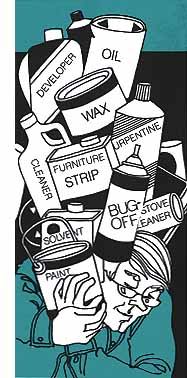Easy Things You Can Do To Protect Drinking Water Sources

Put up signs
Post signs along the border of your source water protection area to notify people that any pollution in that area can affect the quality of local drinking water.
Use and dispose of harmful materials properly
Don't dump hazardous waste on the ground. It can contaminate the soil, which could also contaminate the groundwater or nearby surface water. A number of products used at home contain hazardous or toxic substances that can contaminate ground or surface waters, such as:
- Motor oil
- Pesticides
- Leftover paints or paint cans
- Mothballs
- Flea collars
- Household cleaners
- A number of medicines
Don't overuse pesticides or fertilizers. Many fertilizers and pesticides contain hazardous chemicals. These can travel through the soil and contaminate groundwater. If you feel you must use these chemicals, please remember to use them in moderation.
Volunteer in your community
Find a watershed or wellhead protection organization or a source water collaborative in your community and volunteer to help. If there are no active groups, consider starting one. Use the Source Water Collaborative's How to Collaborate Tool Kit to get started.
Join in a beach, stream or wetland cleanup
You can make new friends while you help protect source water.
Prepare a presentation about your watershed for a school or civic organization
Discuss water quality threats, including the dangers of polluted runoff and habitat loss. In your presentation, highlight actions people can take to protect water quality, such as limiting fertilizer use and eliminating the use of herbicides and pesticides.
Organize a storm drain stenciling project
Stencil a message next to the street drain. This will remind people not to dump waste into a street drain because the water drains to the river. Use simple images and words when stenciling to help make the connection, such as:
- Fish
- Lakes
- Streams
- Bays
- Groundwater
- Oceans
- "Protect Your Water" logo with the image of a glass and faucet
You can also use stencils to produce and distribute a flyer to your neighbors. Remind residents that storm drains dump directly into their local water source.
